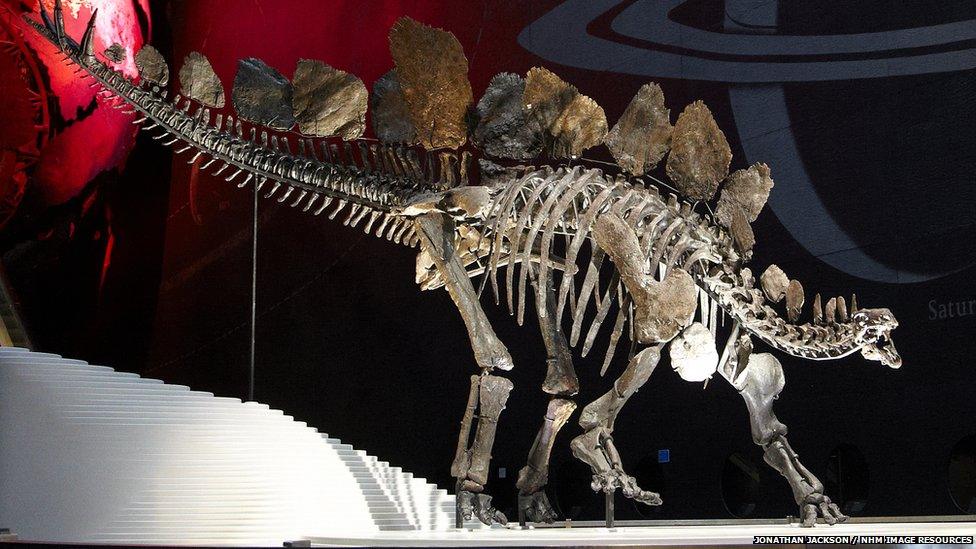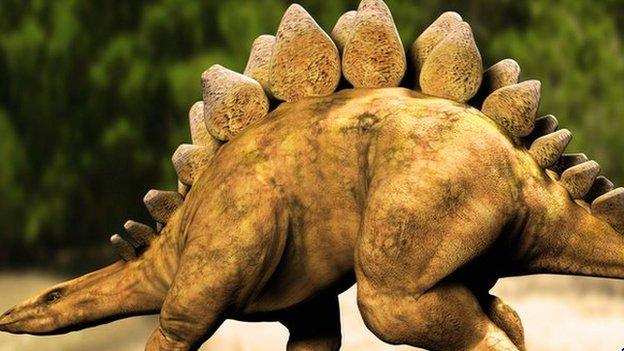Scientists seek to solve mystery of Stegosaurus plates
- Published
Scientists have begun the most detailed analysis ever carried out on a Stegosaurus skeleton.


Sophie: The most complete Stegosaurus skeleton in the world
Researchers hope to learn how much it weighed, how it moved and what it used its iconic back plates for.
A UK team has scanned each of its 360 bones into a computer and has digitally reconstructed the dinosaur.
The specimen, nicknamed "Sophie", has been acquired by the Natural History Museum in London.
Although Stegosauruses are one of the most well known dinosaurs, they are among those that scientists know the least about. There are only six partial skeletons of the creature, which lived around 150 million years ago.
It could grow to the size of a minibus and the gigantic plates which ran along its back were its most distinctive feature.


Stegosaurus: the outstanding questions

How did it use its back plates and tail spikes?
How effective were its muscles?
How did such a small skull manage to chew enough food for such a large body?
How much did it weigh?

Surprisingly, it was 100 years ago that the dinosaur's skeleton was properly assessed and scientifically described. Now, using medical imaging techniques and 3D modelling, researchers at the Natural History Museum hope to learn much more about this iconic creature.
Prof Paul Barrett, who is leading the research, said that they were particularly interested in finding out what stegosauruses used their plates for.
"We want to find out whether they were used for defence or whether they were used as a radiator to help the animal pick up or lose heat," he told BBC News.
Mysteries
Sophie is 80% complete and is thought to be the most complete specimen in the world. Dr Charlotte Brassey, who is working with Prof Barrett, helped to scan in its 360 bones and digitally recreate it on her computer as a detailed 3D model.
"I reconstructed the skeleton to see what it might have looked like and then began to reconstruct the muscles and how they connected with the skeleton. From that we can begin to say how effective its muscles were and eventually in the future we would like to reconstruct how it moved," she told BBC News.
Among the mysteries the researchers would like to solve is how the species was able to walk with such small front legs and such large back legs.
- Published25 July 2014
